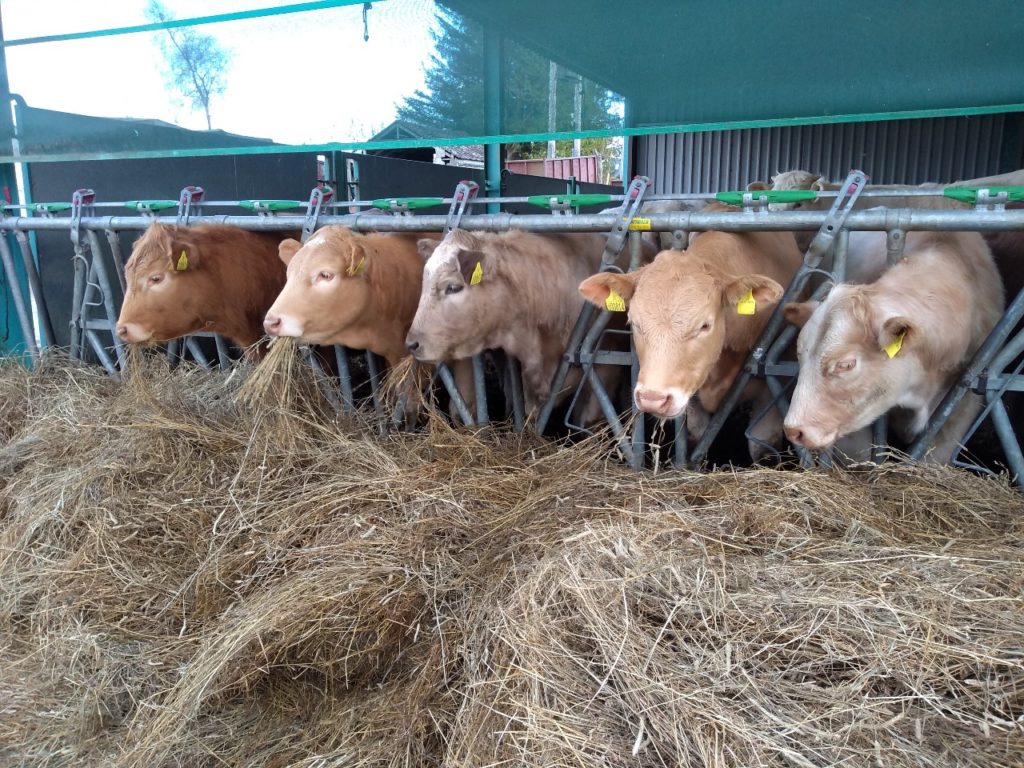Hay Instead of Silage?
13 May 2022Farmers have generally moved away from hay in favour of silage over the years to be less dependent on a good spell of weather. If silage is made well, it is also generally a more nutritious preserved winter feed, reducing the need for as much concentrates and improving animal performance. However, with all input costs rising this year could it be a time to revisit hay? There are pros and cons, and the decision should not be taken without careful thought. High quality hay can be as good, if not better, than some poorer silages however, good hay is only as good as the grass it is made from, and this varies a lot! So, just like silages the analysis of hay can vary immensely depending on the quality and type of swards the crop has been taken from, time of cutting and wilting time. Prolonged wilting times due to bad weather leads to high nutrient losses.
The table below shows good, average and poor hay analysis focussing on metabolisable energy (ME) and crude protein (CP). The dry matter should be consistent, around 84-86% dry matter. Wetter hay will likely spoil a bit and reduce the feed value.
| Hay Type | ME (MJ/kg DM) | CP (g/kg DM) (%) | Comments |
| Poor | 7.5 | 60 (6%) | Not sufficient to meet any maintenance requirements without supplementation |
| Average | 8.6 | 85 (8.5%) | Equivalent to Very poor quality silage |
| Good | 9.2 | 100 (10%) | Similar to poorer quality silage but better intakes |
It is worth noting that good hay has the equivalent feed value to poor/average silage on a dry matter basis, but DM intakes will be higher in good hay, so care should be taken when it makes up a large proportion of the ration for growing youngstock.
Poor hay can be from good grass that has been wilted too long, and/or been rained on and used up its energy reserves for respiration prior to baling. It can also be from older leys of poor, stemmy grass.
Good hay is normally from young grass that has wilted quickly (and will be higher in ME and CP) than grass that has been allowed to head.
The quality makes a huge difference in meeting animal requirements. Poor hay will not meet the requirements of any animal for maintenance. For example, if fed alone, dry suckler cows in good condition two months pre-calving will be fine for maintenance on average hay ad-lib and may put on weight on good hay ad-lib. Youngstock will need more concentrate supplementation on good hay compared to good silage for the same weight gains.
The table below shows examples of rations for hay and silage for youngstock and spring calving cows:
| 350kg store cattle 1kg/day gain | Spring calving cow (8wks pre-calving) | |||
| Good hay (9.2ME) | 4.5kg | - | 11kg | - |
| Good silage (10.5ME) | - | 22kg | - | 27kg |
| Straw | - | - | - | 3kg |
| 12.5ME complete feed | 4.5kg | 3kg | - | - |
Decisions should be made considering the nutritional requirements of the stock being fed. There is no doubt hay is a riskier crop to grow and will need more supplementing (even if it is good) for growing youngstock than high quality silage but it may have a role for replacing silage/straw in dry suckler cow rations.
Sign up to the FAS newsletter
Receive updates on news, events and publications from Scotland’s Farm Advisory Service

